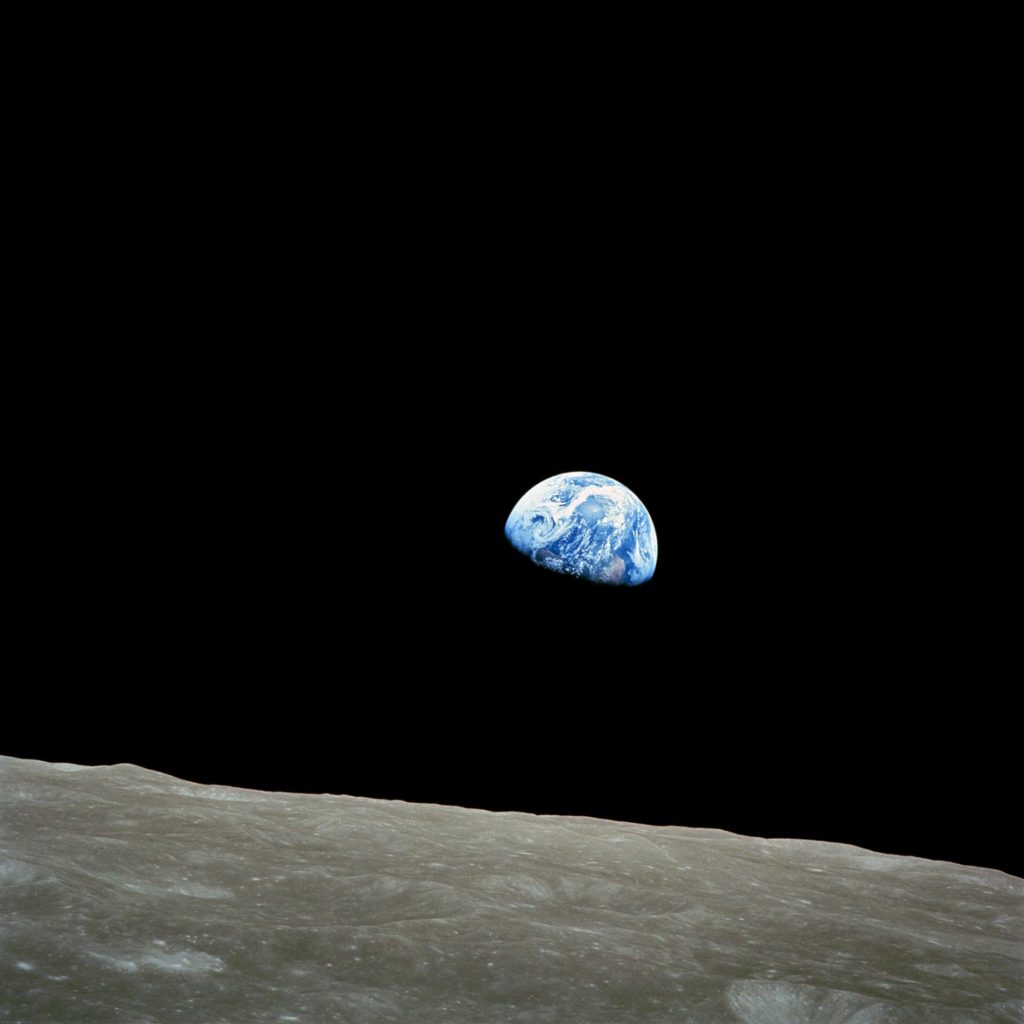On December 21, 1968, NASA launched the Apollo 8 spaceflight. Onboard the Saturn V SA-503 rocket were 3 astronauts.
Frank Borman was the commander, Jim Lovell was the navigator and William Anders was the one responsible for photography. The objective was to have them orbit the moon and study it for a possible moon landing.
For photography, Anders had among others, a Hasselblad EL. It was the first motorized Hasselblad. He had two lenses for the Hasselblad – an 80 mm f2.8 and a 250 mm f5.6. He shot on 70 mm Kodak B&W as well as Ektachrome (color) film.
They inserted into the moon’s orbit three days later. The plan was for them to orbit the moon ten times. As they did, Anders took pictures of the craters on the moon surface with the Hasselblad.
Just before 16:00 UTC (11 am ET) on December 24, 1968, they were coming around for the fourth pass, when Anders saw a view that made him exclaim:
“Oh my God! Look at that picture over there! There’s the Earth coming up. Wow, that’s pretty.”
Anders was observing an “Earthrise” – the Earth emerging from the lunar horizon.

(Image borrowed from the NASA Archives)
Due to the Moon rotating around the Earth synchronously, an Earthrise is not usually observed from the Moon’s surface. This is because, from anywhere on the Moon’s surface, Earth remains in approximately the same position in the moon’s sky, either above or below the horizon. Earthrise is generally visible only while orbiting the Moon, and at selected surface locations near the Moon’s limb, where the oscillation that ensues between the two celestial bodies carries the Earth slightly above and below the moon’s horizon.
As later computer simulations would show, at that point, Anders was the only one who could see the spectacle. His initial shot of the Earthrise was on the B&W film already in the camera and with the 250 mm lens. Then he asked Jim Lovell to hand him a roll of color film. He took the B&W roll out, inserted the roll of Ektachrome and shot the first color image with the 250 mm lens set at 1/250 second and f/11. More images would subsequently be shot.
When the astronauts returned to Earth on December 27, their success was hailed. Not only was their mission a success and helped land the first men on the moon on July 20, 1969, with the Apollo 11 program thus catapulting the US past the USSR in the space race, but it was also a bright light that helped end a very depressing year in the history of the US. 1968 was marked by the never-ending Vietnam war, riots and protests and assassinations (MLK and Robert Kennedy).
The “Earthrise” image was used for a postage stamp. The image has been described as “the most influential environmental photograph ever taken” and helped beget “Earth Day”. There are those who think it possibly spawned the environmental movement.
Those men were sent up there to discover the moon but their biggest legacy may have nothing to do with the moon. Like Anders later said, “We set out to explore the moon and instead discovered the Earth.”
They were so awed by what they saw that still up there orbiting the moon, in what was to become a seminal moment in TV broadcast history, the three men read, one after the other, the first 10 verses of Genesis 1 to an enthralled nation on December 24, 1968. Like Lovell said, “The vast loneliness is awe-inspiring and it makes you realize just what you have back there on Earth.”
I do not believe in Intelligent Design but these words from Genesis that those astronauts read to the world from up there says so much: “And God saw that it was good.”
The “it” is the universe including this Earth of ours. This makes our little planet good too. Our Earth is good. Our Earth is beautiful. Let’s take care of it. We may not believe the words in Genesis or even doubt the whole space program. One fact remains though – for now, this planet Earth is all we have and we better take care of it, or soon “…it will not be good.”
